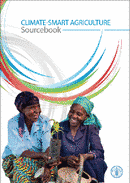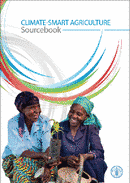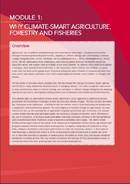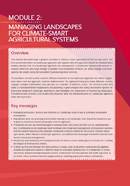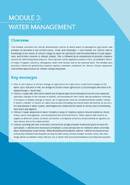Следующие ресурсы, связанные с КОСХ, призваны оказывать помощь заинтересованным сторонам и исследователям на глобальном, региональном и местном уровнях в их работе по реализации практик КОСХ.
Publications
The purpose of the sourcebook is to further elaborate the concept of CSA and demonstrate its potential, as well as limitations. It aims to help decision makers at a number of levels (including political administrators and natural resource managers) to understand the different options that are available for planning, policies and investments and the practices that are suitable for making different agricultural sectors, landscapes and food systems more climate-smart. This sourcebook is a reference tool for planners, practitioners and policy makers working in agriculture, forestry and fisheries at national and subnational levels. The sourcebook indicates some of the necessary ingredients required to achieve a climate-smart approach to the agricultural sectors, including existing options and barriers.
Acknowledgements and Executive Summary
Overview and Key messages
1.1 Food security and climate change: three intertwined challenges
1.2 Towards more efficient and resilient systems
1.3 Increase systemic efficiency and resilience: policies, institutions finances
1.4 What’s new with CSA?
1.5 Conclusions and focus of the sourcebook
Overview and Key messages
2.1 Why is a landscape approach needed for achieving Climate-smart agriculture?
2.2 How can a landscape approach be implemented?
2.3 Examples of landscape approaches
2.4 Conclusions
Overview and Key messages
3.1 Introduction
3.2 Water management in agriculture: status and trends
3.3 Potential impacts of climate change on water in agriculture
3.4 Vulnerability to climate change and resilience: a variety of situations
3.5 Assessing risk, preparing responses
3.6 Options for adaptation to climate change
3.7 Prioritizing options with an eye on vulnerable categories of people
3.8 Conditions for successful adaptation
3.9 Water management for climate change mitigation
3.10 Conclusions

